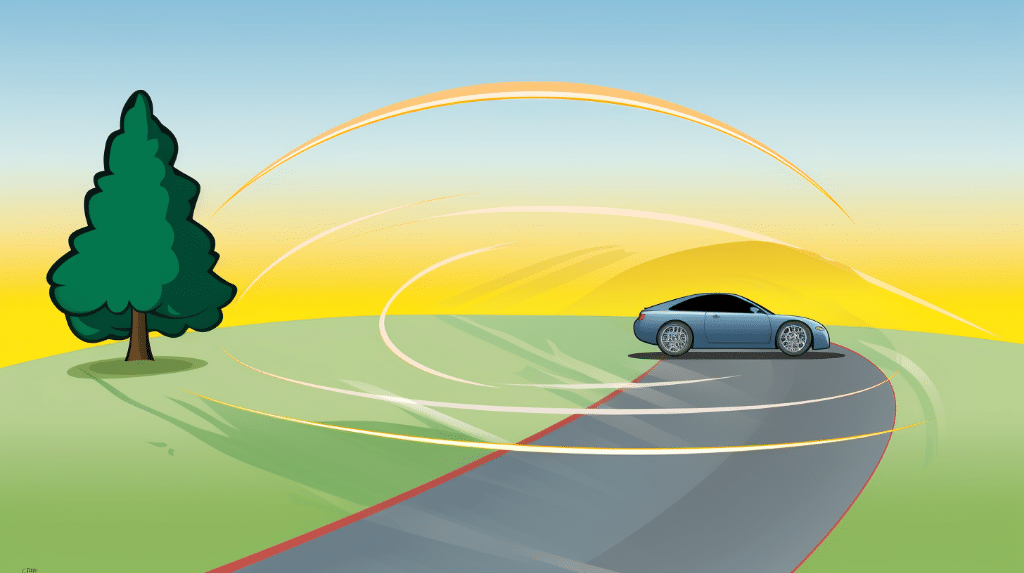
When dealing with objects in motion or at rest, the concept of friction plays a crucial role. Friction is the force that opposes the motion of an object when it comes into contact with another surface. To understand and analyze the forces involved, it’s important to be able to calculate the normal force and the coefficient of friction. In this blog post, we will dive deep into the topic of how to find the normal force with the coefficient of friction. We will provide a step-by-step guide, explain the relationship between the coefficient of friction and the calculation, and provide examples to solidify our understanding.
How to Calculate Normal Force with Coefficient of Friction
Step-by-step Guide to Calculate Normal Force
To calculate the normal force using the coefficient of friction, we need to follow these steps:
-
Identify the object and its surroundings: Determine the object for which you want to calculate the normal force and the surface it is in contact with.
-
Determine the coefficient of friction: The coefficient of friction, denoted by the symbol μ, is a dimensionless constant that represents the frictional properties between two surfaces. It can be found in tables or provided in the problem.
-
Identify the forces acting on the object: Determine all the forces acting on the object. These forces may include gravitational force, applied force, and the force due to friction.
-
Analyze the forces: Determine the vertical forces acting on the object. In most cases, the vertical force consists of the gravitational force and the normal force.
-
Equate the vertical forces: The normal force and the gravitational force must be equal in magnitude but opposite in direction to maintain equilibrium. Mathematically, this can be written as:
![]()
where ![]() is the gravitational force and
is the gravitational force and ![]() is the normal force.
is the normal force.
- Solve for the normal force: By substituting the known values into the equation, you can solve for the normal force.
How Coefficient of Friction Affects the Calculation
The coefficient of friction determines the magnitude of the frictional force between two surfaces. It depends on the nature of the surfaces in contact and is influenced by factors such as roughness, texture, and the presence of lubricants. The coefficient of friction can take on different values depending on whether the object is at rest (static friction) or in motion (kinetic friction).
When calculating the normal force with the coefficient of friction, the relationship between these two quantities becomes apparent. A higher coefficient of friction implies a stronger frictional force, which, in turn, affects the normal force. In situations where the coefficient of friction is high, the normal force needs to be greater to counterbalance the force due to friction and maintain equilibrium.
Worked-out Example on Calculating Normal Force with Coefficient of Friction
Let’s take an example to better understand how to calculate the normal force with the coefficient of friction.
Suppose we have a box of mass 10 kg resting on a surface with a coefficient of friction of 0.5. We want to find the normal force acting on the box.
-
Identify the object and its surroundings: The object is the box, and it is in contact with a surface.
-
Determine the coefficient of friction: The coefficient of friction is given as 0.5.
-
Identify the forces acting on the object: The forces acting on the box are the gravitational force and the normal force.
-
Analyze the forces: The vertical forces acting on the box are the gravitational force (downward) and the normal force (upward).
-
Equate the vertical forces: By using Newton’s second law and equating the gravitational force to the normal force, we have:
![]()
![]()
![]() is the mass of the box and
is the mass of the box and ![]() is the acceleration due to gravity)
is the acceleration due to gravity)
- Solve for the normal force: Substituting the values, we get:
![]()
Therefore, the normal force acting on the box is 98 N.
Special Cases in Calculating Normal Force with Coefficient of Friction
How to Find Normal Force with Coefficient of Friction and Mass
In cases where the mass of the object is given along with the coefficient of friction, the steps to calculate the normal force remain the same. By using Newton’s second law, with the gravitational force and the normal force balancing each other, you can solve for the normal force.
Finding Coefficient of Friction with Only Normal Force
Sometimes, you might be given the normal force and asked to find the coefficient of friction. In such cases, you can rearrange the equation to solve for the coefficient of friction. By dividing the force due to friction by the normal force, you can determine the coefficient of friction.
How to Find Coefficient of Friction without Normal Force
If the normal force is not provided, but other quantities such as the force due to friction and the applied force are given, it is still possible to find the coefficient of friction. By dividing the force due to friction by the applied force, you can calculate the coefficient of friction.
Common Misconceptions and Errors
Does Coefficient of Friction Depend on Normal Force?

The coefficient of friction is independent of the normal force. It only depends on the nature of the surfaces in contact and remains constant as long as the surfaces and the conditions remain the same.
How to Find Friction Force without Coefficient


To find the frictional force without the coefficient of friction, you need additional information, such as the normal force or the applied force. Without the coefficient of friction, it is not possible to directly calculate the frictional force.
Normal Force Times Coefficient of Friction: What Does It Mean?
The product of the normal force and the coefficient of friction gives us the maximum frictional force that can be exerted between two surfaces. It represents the upper limit of the frictional force and is often used in force analysis and calculations.
By understanding how to find the normal force with the coefficient of friction, you can gain insights into the forces involved in various scenarios. This knowledge is crucial for analyzing and predicting the behavior of objects in motion and at rest. Remember to carefully consider the given values and apply the relevant formulas to solve for the normal force. With practice, you will become adept at calculating the normal force with the coefficient of friction and applying it to real-world situations.
How can the coefficient of friction and tension be used to find the normal force?
The concept of Finding Normal Force with Tension is an important one when studying the relationship between forces and equilibrium. By combining this idea with the knowledge of the coefficient of friction, we can further explore the interaction between objects and their support surfaces. When an object is subject to both frictional forces and tension, understanding how these factors affect the normal force becomes crucial. By utilizing the equation for net force in the y-direction and considering the different forces at play, we can calculate the normal force in such scenarios.
Numerical Problems on how to find normal force with coefficient of friction
Problem 1:
A block of mass ![]() kg is resting on a horizontal surface. The coefficient of friction between the block and the surface is
kg is resting on a horizontal surface. The coefficient of friction between the block and the surface is ![]() . Calculate the normal force exerted on the block.
. Calculate the normal force exerted on the block.
Solution:
The normal force (![]() ) can be calculated using the formula:
) can be calculated using the formula:
![]()
where ![]() is the mass of the block and
is the mass of the block and ![]() is the acceleration due to gravity.
is the acceleration due to gravity.
Substituting the given values, we have:
![]()
Therefore, the normal force exerted on the block is 98 N.
Problem 2:
A 500 N box is placed on a ramp inclined at an angle of 30 degrees to the horizontal. The coefficient of friction between the box and the ramp is 0.3. Calculate the normal force and the frictional force acting on the box.
Solution:
The normal force (![]() ) can be calculated using the formula:
) can be calculated using the formula:
![]()
where ![]() is the mass of the box,
is the mass of the box, ![]() is the acceleration due to gravity, and
is the acceleration due to gravity, and ![]() is the angle of inclination.
is the angle of inclination.
Given that the weight of the box is 500 N, we can calculate the mass using the formula ![]() :
:
![]()
Substituting the values into the normal force formula, we have:
![]()
Therefore, the normal force acting on the box is approximately 444.87 N.
The frictional force (![]() ) can be calculated using the formula:
) can be calculated using the formula:
![]()
where ![]() is the coefficient of friction.
is the coefficient of friction.
Substituting the given values, we have:
![]()
Therefore, the frictional force acting on the box is approximately 133.46 N.
Problem 3:

A car of mass 1000 kg is moving on a horizontal road with a speed of 20 m/s. The coefficient of friction between the tires and the road is 0.4. Calculate the normal force and the maximum frictional force that can be exerted on the car.
Solution:
The normal force (![]() ) can be calculated using the formula:
) can be calculated using the formula:
![]()
where ![]() is the mass of the car and
is the mass of the car and ![]() is the acceleration due to gravity.
is the acceleration due to gravity.
Substituting the given values, we have:
![]()
Therefore, the normal force acting on the car is 9800 N.
The maximum frictional force ![]() can be calculated using the formula:
can be calculated using the formula:
![]()
where ![]() is the coefficient of friction.
is the coefficient of friction.
Substituting the given values, we have:
![]()
Therefore, the maximum frictional force that can be exerted on the car is 3920 N.
Also Read:
- Nuclear force examples
- Example of net force
- What objects have magnetic force
- Atomic force microscopy imaging techniques
- Does the direction of magnetic force change
- How to find tangential force
- Electrostatic force and distance
- Natural frequency and forced vibrations
- How to calculate force of gravity
- Is gravitational force positive
Hi,
I am Rabiya Khalid, I have completed my masters in Mathematics. Article writing is my passion and I have been professionally writing for more than a year now. Being a science student, I have a knack for reading and writing about science and everything related to it.
In my free time, I let out my creative side on a canvas.